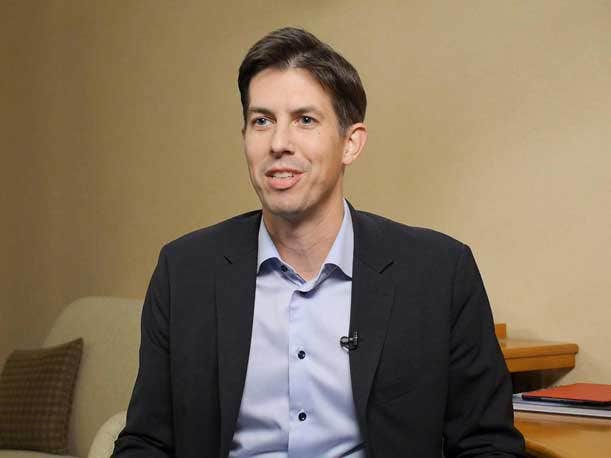Dell Co-COO: Apex Now ‘World’s Most Comprehensive As-A-Service And Multi-Cloud Portfolio’
‘True multi-cloud by design requires something easy to say and very hard to do: the freedom to run workloads wherever your business needs dictate, unconstrained by technology,’ says Dell Technologies Co-COO Chuck Whitten at Dell Technologies World.

Dell Technologies Co-COO Chuck Whitten
When it comes to multi-cloud, Dell Technologies wants you to think of it as an intrepid letter carrier: Neither on-premises, nor colocation, nor public cloud, nor hybrid-cloud shall keep this data from running in its most efficient environment.
“Because there is no one answer for every workload,” founder, Chairman and CEO Michael Dell said, “but there is a right answer to optimize every workload for performance and cost.”
Kicking off Dell Technologies World 2023, the company is leaning into solving its customers’ most complex data challenges across numerous types of environments. To accomplish this, it has now paired its Apex as-a-service offering with the most powerful names in cloud—Amazon Web Services, Microsoft Azure, Red Hat and VMware—to give customers the choice and flexibility to avoid cloud-lock in.
“Multi-cloud by design isn’t just a tag line. Here at Dell Technologies World over the next few days we will release the largest expansion ever to our Apex offerings, bringing customers a modern cloud experience and consumption model built for multi-cloud,” Dell told the crowd, which packed the Mandalay Bay Events Center in Las Vegas.
Steven McCall, technical solutions architect at Dell’s first-ever Titanium Black Partner, World Wide Technology, an 8,000- employee St. Louis, Mo.-based soltuion provider, praised Dell for the dedication it shows to partners.
“The Apex announcements today show Dell’s commitment to making partners a necessary part of their business,” McCall said. “The speed of transformation that organizations need to achieve makes the partnership with WWT more important than ever to solve these problems and deliver outcomes on time and on budget. Customers will need help bringing new ideas to innovation. WWT and Dell are pivotal to that success.”
Unveiled at the show was Dell Apex Cloud Platforms for Microsoft, Red Hat and VMware. Each is built to drive horizontal consistency across the environment with common hardware platforms built on PowerEdge technology, common software built on PowerFlex technology, and common automated management and orchestration for that entire stack from the firmware up to the cloud operating system.
Also introduced was Dell ApexBlock Storage for AWS and Dell Apex Block Storage for Microsoft Azure. These were discussed at the show last year under the code name “Project Alpine.” Each gives customers 300 percent better performance per dollar through its linear scalability and performance.
“The architecture itself provides multi-availability-zone durability so you can truly have that resilience that you’re used to in the data center and bring that to the cloud,” said Dell Technologies Vice President of Product Management Caitlyn Gordon. “Ultimately, that allows you to bring workloads you never could have before from the data center to the public cloud.”
Dell Technologies Co-COO Chuck Whitten said Dell’s “ground to cloud” capabilities extend advanced storage software out to the public clouds, while Dell’s “cloud to ground” products can return that cloud experience to the data centers.
“True multi-cloud by design requires something easy to say and very hard to do: the freedom to run workloads wherever your business needs dictate, unconstrained by technology,” he said. “Running the right workloads in the right environment, giving developers access to the innovations across the cloud ecosystem—we are significantly expanding from where we have been and officially can say that we are now the world’s most comprehensive as-a-service and multi-cloud portfolio that spans from the data center to the public cloud and now to client devices.”
The storage products give partners a simple way to manage highly complex infrastructure tasks such as setting up hybrid cloud architectures and migrating on-premises workloads to the cloud, according to Rick Gouin, CTO of Winslow Technology Group, a Dell Platinum Partner based in Boston.
“If we wanted to replicate that environment into AWS we might use AWS DRS. Then if we wanted to switch that from AWS to Azure we would then have to use Azure’s tooling. What Dell is giving us here with Project Alpine are endpoints in the cloud. So that way we are replicating from Dell device to virtual Dell device. Now I can move that between clouds and it doesn’t change.”
When he described the products to reporters after the keynote, Dell said much of what the company is doing with Apex is “industrializing” its managed services to be deployed with “enormous rapidity and efficiency with customers of all types.”
Whitten summarized the theme of Dell’s Apex offerings with four questions: “Would you like to buy your infrastructure? Would you like to subscribe to your infrastructure? Would you like to subscribe to your infrastructure with layers of managed services either through us or through a partner? And would you like all of that in a modern cloud experience?”
Josh Lee, CTO at VirtuIT, a Nanuet, N.Y.-based Dell Platiumn Partner, said he sees the ease of relocating workloads as returning power to the end user when it comes to selecting the best environment from which to run their organization’s data. That eliminates a pain point.
He said while he would like to better understand where the partner fits into that relationship, there are numerous partner-facing benefits to what he has seen so far.
“If this really has a good control plane where you can move workloads, that’s going to be something that a lot of our customers would want to talk about because most of them are in at least two public clouds,” Lee said. “Even people who want to repatriate. It can just be a pain to move it. You have to have the expertise and tools. And you may have to have the expertise and tools for where you are leaving and where you are going to make it work right.”